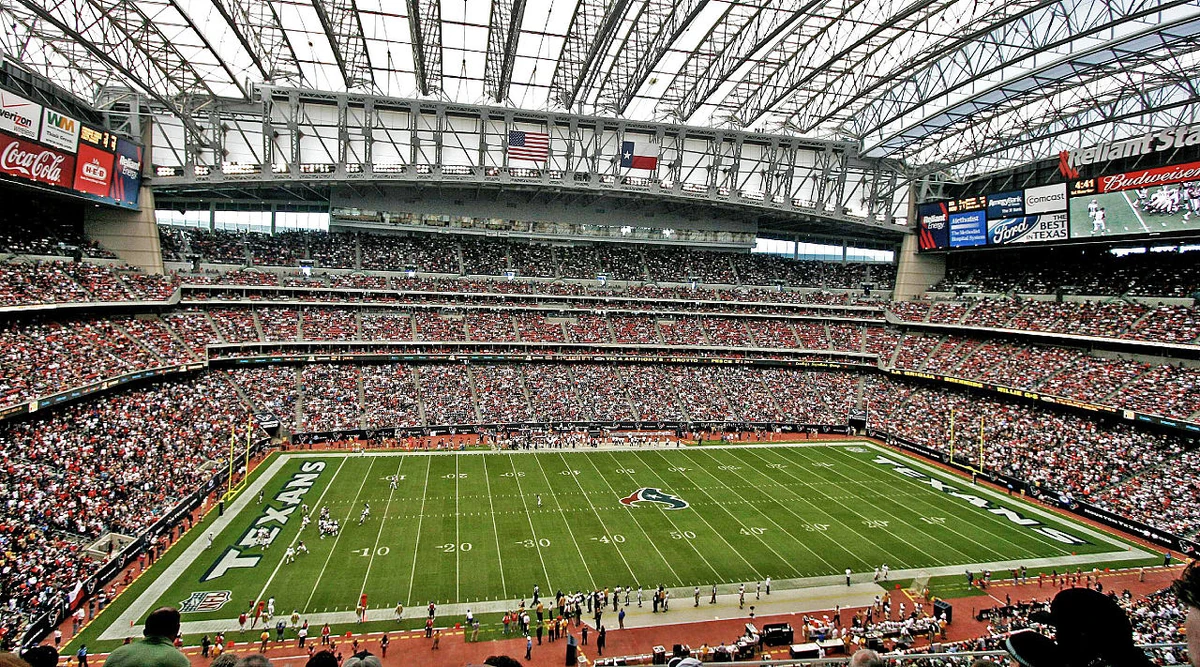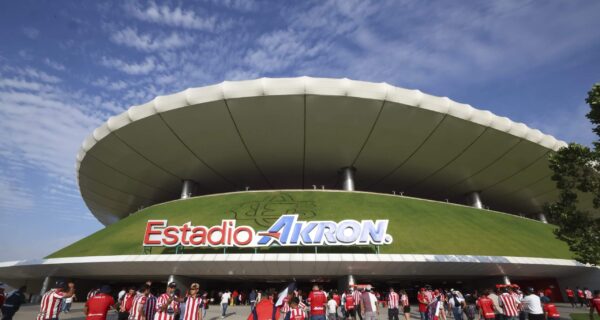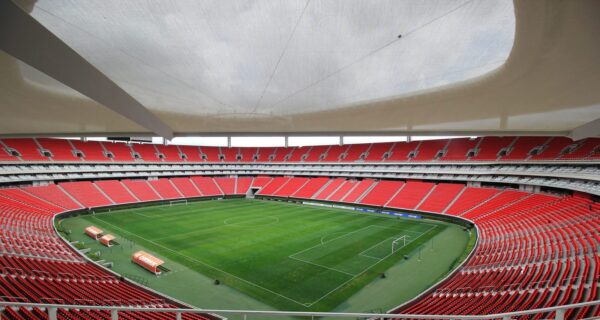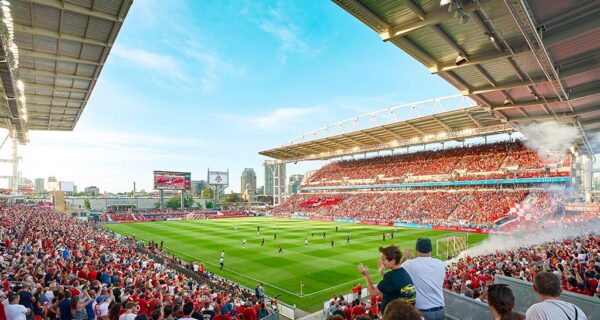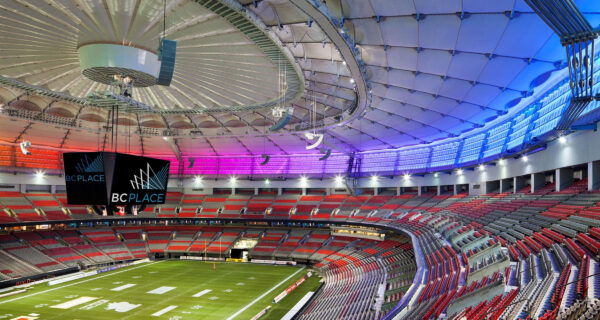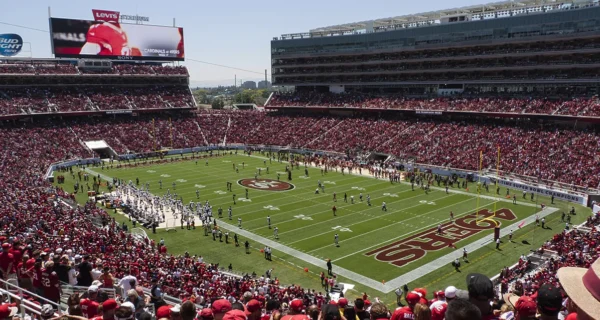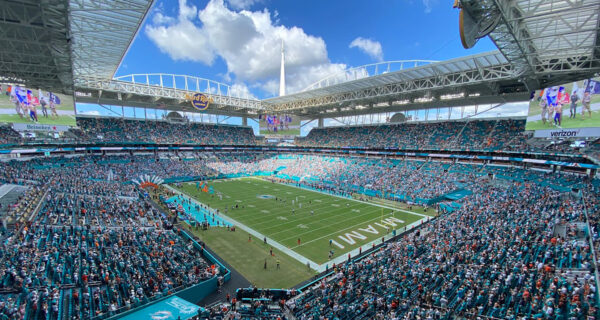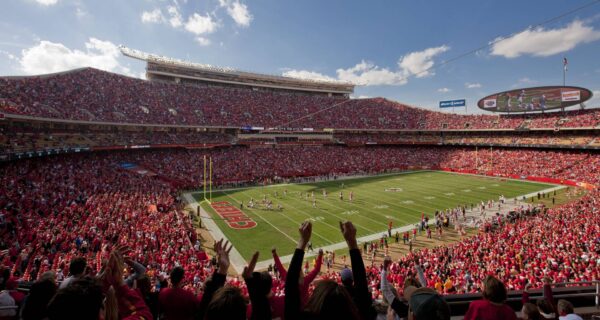NRG Stadium in Houston, Texas stands ready to host seven exciting matches during the 2026 FIFA World Cup. Known for its massive retractable roof and state-of-the-art facilities, this venue will be temporarily renamed “Houston Stadium” for the tournament.
Fans attending the five group-stage fixtures, one Round of 32 match, and a special Round of 16 clash scheduled for July 4th can expect a world-class soccer experience at this impressive facility.
NRG Stadium Capacity and Seating
NRG Stadium boasts a standard seating capacity of 72,220 for regular events. The venue can expand to accommodate up to 80,000 spectators for special occasions, making it one of the largest sports venues in Texas. This flexibility ensures adequate space for the expected crowds during the World Cup matches.
The stadium currently holds the record attendance of 80,108 people, set during a George Strait concert at the Houston Livestock Show and Rodeo on March 17, 2019. This demonstrates the venue’s ability to manage large crowds effectively and safely.
Luxury seating includes 198 suites distributed across multiple levels. The breakdown consists of 78 suites on the 200 Level, 13 suites on the 300 Level, 88 suites on the 400 Level, and 19 suites on the 800 Level. These premium spaces offer exceptional views and comfort.
The stadium also features approximately 7,000 business/club seats for those seeking enhanced amenities. These premium seating options provide an elevated experience with better sightlines, additional legroom, and access to exclusive lounges.
Accessible seating areas exist throughout the venue for guests with disabilities. These areas include wheelchair accessible and companion seating at various levels, including the top sections of the lower, mezzanine, club, and upper levels.
Location and Surrounding Area
NRG Stadium sits at 1 NRG Parkway in Houston, Texas. Its precise coordinates place it at 29° 41′ 5.4960” N and 95° 24′ 42.0012” W, making it easily locatable for visitors from around the world.
The stadium forms part of the sprawling 350-acre NRG Park complex. This massive entertainment district includes additional facilities like NRG Center, NRG Arena, and the historic Astrodome, known as the “Eighth Wonder of the World.”
Located approximately 6.5 miles southwest of Downtown Houston, the stadium offers convenient access to the city’s major attractions and amenities. The Texas Medical Center, Houston Zoo, and Museum District sit nearby.
The surrounding area provides numerous dining and lodging options for World Cup attendees. Visitors can find everything from fast-casual restaurants to upscale dining experiences within a short drive of the stadium.
Stadium Design and Architecture
Constructed between March 2000 and August 2002, NRG Stadium cost $352 million to build (equivalent to about $615 million in 2024 dollars). The venue opened on August 24, 2002, as the first NFL facility to feature a retractable roof.
The architectural design resulted from collaboration between several firms, including HOK Sport (now Populous), Houston Stadium Consultants, Lockwood, Andrews & Newnam, and Hermes Architects. These teams created a stadium that balances functionality with aesthetic appeal.
The most distinctive feature remains the innovative retractable fabric roof. This engineering marvel consists of two large panels that split apart at the 50-yard line and can open or close in just 7 minutes. The roof provides flexibility for events in any weather condition.
The roof mechanization features 10 parallel, tri-chord trusses on two rails, supported by a 675-foot-long supertruss. A computerized system in the press box controls the roof operation with live feedback from all components throughout the process.
The stadium encompasses approximately 1.9 million square feet of space across multiple levels. Its transparent design with fabric roof and extensive glazing creates an open-air feel even when enclosed, giving the building a distinctive glow at night.
The playing field covers 97,000 square feet and currently uses Hellas Matrix Helix artificial turf installed over concrete. This durable surface stands ready to host international soccer matches during the World Cup.
Transportation Options to NRG Stadium
Public transportation offers a convenient way to reach the stadium. The METRO Rail Red Line serves the venue with trains running every 12 minutes, costing just $1.25 each way. The Stadium Park/Astrodome station provides the closest access point.
Several bus routes service the area, including lines 11, 84, and 14. The nearest bus station, Kirby Dr @ Westridge St, sits just a five-minute walk from the stadium entrance, making bus travel a practical option for many attendees.
The facility features approximately 26,000 parking spaces spread across various lots. During major events like the World Cup, pre-purchased parking passes typically become necessary. ADA accessible parking spaces exist in each lot for vehicles with proper placards.
Ride-sharing services drop off and pick up passengers in the Brown Lot located at Maine and Murworth near the Green Lot. This designated area helps manage traffic flow during major events.
Taxi services and hotel shuttles can utilize the Green Lot near the south pedestrian bridge over Kirby Drive. After games, taxis stage in this location so fans don’t need to call ahead for service.
For those with mobility concerns, accessible drop-off and pick-up points exist outside gates #9 and #10, near the Kirby and Westridge intersection and the Kirby and McNee intersection respectively. Mobility assistance services transport guests from ticket gates to their seats.
Stadium Amenities
NRG Stadium features a cutting-edge Wi-Fi system designed for simultaneous high-speed internet access for all guests. Over 1,200 wireless access points deploy under seats and in concourses to ensure reliable connectivity throughout the venue.
Visual entertainment comes via more than 1,550 HD LCD flat-screen TVs placed throughout public areas. Two massive end zone LED video boards measure 277 feet wide by 52.5 feet high each, ensuring everyone catches the action.
The stadium offers comprehensive accessibility features for guests with disabilities. These include wheelchair assistance, accessible entrances, elevators, restrooms, and seating areas. Service animals receive accommodation, and sensory kits help guests with sensory sensitivities.
Assisted listening devices come available at all Guest Services booths for deaf and hard-of-hearing guests. Closed captioning displays in the lower northwest and southwest corners of the seating bowl, and sign language interpreter services can be requested in advance.
Four massive concourse levels provide ample space for concessions, restrooms, and special event areas. The venue offers various food and beverage options, from traditional stadium fare to more upscale culinary experiences.
Guest Services booths located throughout the stadium provide assistance with various needs, including lost and found items, stadium information, and accessibility services. First aid stations staffed by medical professionals ensure safety during events.
Notable Features and Technology
The retractable roof opening measures 500 feet long by 385 feet wide, creating an impressive portal to the sky. The supporting supertruss spans 960 feet in length and varies between 50 and 75 feet in width, supporting the massive roof structure.
Stadium lighting employs 480 optically enhanced LED luminaries containing more than 65,000 individual LEDs. This energy-efficient system provides exceptional illumination for both in-person spectators and broadcast requirements.
A 360-degree LED fascia display encircles the stadium, measuring 1,640 feet long by 2.5 feet high. Additional LED fascia displays on the upper end zones and sidelines provide supplementary visual information and entertainment.
The loading dock area includes six dock bays with room for four TV production trailers. A 20,000-square-foot marshalling area facilitates efficient event setup and breakdown, essential for quick turnarounds between World Cup matches.
The playing field dimensions meet international soccer standards at 105 meters long by 68 meters wide. The artificial turf surface includes proper markings and dimensions for FIFA World Cup competition.
Sound distribution comes via a sophisticated audio system designed to deliver clear sound throughout the seating bowl. This creates an immersive experience for fans attending the high-stakes international matches.
NRG Stadium’s Role in the 2026 FIFA World Cup
During the 2026 FIFA World Cup, NRG Stadium will operate under the name “Houston Stadium” in accordance with FIFA guidelines that prohibit corporate-sponsored venue names. All NRG signage will receive temporary covering during the tournament.
The stadium secured seven coveted World Cup matches, including five group-stage fixtures, one Round of 32 match, and a Round of 16 clash scheduled for the American Independence Day, July 4th. This makes Houston one of the tournament’s key host cities.
The specific schedule includes matches on June 14, 17, 20, 23, and 26 for the group stage. The Round of 32 match will take place on June 29, followed by the Round of 16 match on July 4, creating a festive atmosphere for the knockout game.
Team matchups remain undetermined until the official World Cup draw occurs later in 2025. This anticipation adds excitement as fans speculate which national teams might compete in Houston.
The tournament marks the first FIFA World Cup matches in Houston, though the stadium has previously hosted other international soccer events, including matches featuring the United States men’s national team and Mexico national team friendlies.
FIFA’s selection of NRG Stadium highlights the venue’s world-class facilities and Houston’s capability to host premier international sporting events. The city expects significant tourism and economic benefits from hosting these seven matches.
FAQs
1. What is the seating capacity of NRG Stadium for the 2026 FIFA World Cup?
NRG Stadium will seat approximately 72,220 spectators for FIFA World Cup matches. The stadium can expand to accommodate up to 80,000 fans for special events, though the exact configuration for World Cup matches may vary based on FIFA requirements for media, sponsors, and officials.
2. Why will NRG Stadium be called “Houston Stadium” during the 2026 World Cup?
FIFA guidelines prohibit corporate-sponsored venue names during the World Cup tournament. This rule applies to all 16 host stadiums across the United States, Canada, and Mexico. All signage referring to NRG will be covered, and broadcasters must use the temporary name “Houston Stadium.”
3. How many 2026 FIFA World Cup matches will NRG Stadium host?
NRG Stadium will host seven FIFA World Cup matches in total. This includes five group-stage fixtures on June 14, 17, 20, 23, and 26, one Round of 32 match on June 29, and a Round of 16 match on July 4th, 2026.
4. What public transportation options exist for reaching NRG Stadium?
Fans can take the METRO Rail Red Line to the Stadium Park/Astrodome station. Bus routes 11, 84, and 14 also serve the stadium area. The nearest bus stop sits just a five-minute walk away at Kirby Dr @ Westridge St, and trains run every 12 minutes during events.
5. Does NRG Stadium have a retractable roof, and how quickly can it open or close?
Yes, NRG Stadium features an innovative retractable fabric roof that can open or close in just 7 minutes. The roof splits into two large panels at the 50-yard line, allowing the stadium to host events in any weather condition.
6. What special accommodations does NRG Stadium offer for guests with disabilities?
The stadium provides wheelchair accessible seating throughout various levels, mobility assistance services, accessible entrances and restrooms, assisted listening devices, closed captioning, and sensory kits for guests with sensory sensitivities. Service animals receive accommodation, and sign language interpretation can be arranged.
7. How much did NRG Stadium cost to build, and when did it open?
NRG Stadium cost $352 million to build ($615 million in 2024 dollars) and opened on August 24, 2002. Construction began on March 9,
2000, making it the first NFL facility with a retractable roof.
8. What major events has NRG Stadium hosted in the past?
NRG Stadium has hosted Super Bowls XXXVIII (2004) and LI (2017), the 2024 College Football Playoff National Championship, WrestleMania 25 (2009), numerous Houston Texans NFL games, the annual Houston Livestock Show and Rodeo, and various international soccer matches featuring the United States and Mexico national teams.
9. What technology features does NRG Stadium offer for visitors?
The stadium features a high-density Wi-Fi system with over 1,200 access points, more than 1,550 HD LCD TVs throughout public areas, massive LED video boards in each end zone (277′ × 52.5′), a 360-degree LED fascia display, state-of-the-art LED sports lighting, and a sophisticated sound system.
10. What dining options and concessions are available at NRG Stadium?
NRG Stadium offers diverse food and beverage choices across its four concourse levels. Options range from traditional stadium fare like hot dogs and nachos to local Houston specialties, international cuisine, and premium dining experiences. Multiple bars and beverage stations serve various drinks throughout the venue.

